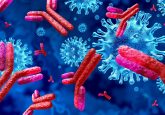Signal amplification technology reveals previously undetectable proteins of disease

Researchers from Pacific Northwest National Laboratory (WA, USA) have developed a method to measure and distinguish between phosphorylated proteins which may be utilized in research to treat diseases including diabetes and cancer. The new technique overcomes some of the challenges associated with analyzing phosphorylated proteins, often present in low levels that cannot be detected by current instrumentation such a mass spectrometry.
In mass spectrometers, molecules usually collect in a trap just ahead of the detector until a threshold quantity in reached causing them to be released. If this threshold is not met, such as can be the case for low levels of phosphorylated proteins, the molecules remains stuck and are not analyzed.
To amplify the signal and overcome this obstacle, the researchers used isobaric labeling to chemically tag all proteins in a given sample with a unique label. The tagged samples were then mixed with a biologically similar and readily available “boosting” material in a 30:1 boosting to sample ratio, resulting in an overall signal large enough to be detected by the mass spectrometer. This allowed the samples to be analyzed, with the ratios in which tags appeared providing scientists with a method to determine the quantity of each protein in the original sample.
In the study, published in the journal Analytical Chemistry, the team also demonstrated that three different cell lines of acute myeloid leukemia could be effectively distinguished based on protein activity profiles. Subsequently, the researchers analyzed pancreatic islets, produced by insulin and glucagon, that are essential for maintaining blood glucose levels and represent a therapeutic target in Type 1 diabetic patients. Utilizing the new technique, the team were able to analyze variations in protein activity in human islets in response to treatment – a step forward in diabetes monitoring.
“This will give us new insight into what happens when insulin-producing cells die in patients with diabetes. The ability to track protein activity more rigorously will help us understand what signaling pathways are involved in cell death,” explained corresponding author Wei-Jun Qian.
This signal boosting strategy provides biological and/or biomedical researchers with an attractive solution for comprehensive and quantitative phosphoproteome profiling of small cell populations where traditional workflows lack sensitivity. Applications include comparison of cells before and after drug treatment, testing different doses, or studying activation and deactivation times.
Study co-author, Tao Lui, concluded: “The possibilities are endless – you can do very large-scale quantitation, and you can also blend many different conditions you want to study into one experiment.”
Sources: Yi L, Tsai CF, Dirice E et al. Boosting to amplify signal with isobaric labeling (BASIL) strategy for comprehensive quantitative phosphoproteomic characterization of small populations of cells. Anal. Chem. 91(9), 5794–5801 (2019); https://phys.org/news/2019-05-technology-reveals-previously-undetectable-protein.html





